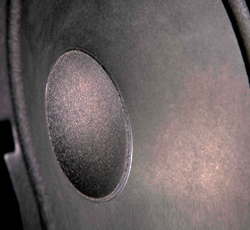
If you’ve ever hung around with people who tune PA systems using modern measurement tools like Meyer Sound SIM or Rational Acoustics Smaart, you might have noticed (as I have) a curious phenomenon: When you look at the system’s frequency response after it’s tuned, you often observe a broad valley between about 200 and 400 or 500 Hz.
Why have they set the tuning like that? One of the reasons is that when the system gets loud, the woofers fill up that range with harmonics, so the real program has to be reduced to maintain overall musical balance.
That’s a shame, because a lot of very compelling music (piano left hand, cello, saxophone, lower strings of guitar, floor tom…) lives in that range.
Here’s what good bass sounds like:
—Bass impulses do not mask the rest of the music.
—You have a sense that the bass is part of the music, not just some rhythmic sound effect.
—The bass has color and texture that vary from moment to moment—it isn’t all just the same monotonous drone all the time. Unless, of course, that’s the way the music is intended to sound.
—You can hear the pitches of notes, not just vague roars, rumbles, bonks, and thuds.
—Percussive sounds are realistic, and do not sound like giants coughing or rugs being beaten or huge pillows being whacked with sticks.
—Transients are strong and hard, but when a sustained note is called for, it is clearly and musically produced.
—There are no spurious harsh or honky noises added.
—When a really loud, really low note is played, it hits you in the stomach and lower body, not just in the upper chest and head.
Good bass is transparent. This may sound strange—how can bass sound transparent? If you want to hear the answer, go to a pipe organ recital in a fair-sized church or cathedral. No PA system on earth has ever produced the quality of bass that most decent pipe organs put out every Sunday.
Regardless of what kind of music you like, if you care about bass you should seek out a pipe organ concert every couple of years, just to remind your ears what it can be like.
In PA systems, good bass is rare. In fact, many mix engineers have never heard it. Whey they finally do get a chance to mix on a system that does have it, they often need a little time to get used to it. But after they do, they almost never want to go back to bad bass.
Is A Little Bad Better?
Sometimes people say that a little bass distortion is good, because it makes bass sound louder and adds punch to transients. I think the jury’s still out on the value of that approach.
There’s no doubt that distorted bass does sound louder, heavier, and more oppressive. There’s also no doubt that, if properly mixed, occasional clipping of bass amps can add some crunch to bass transients.
However, I think those effects are hard to handle and can easily get out of hand. My vote: If you want more bass, get more (or better) woofers. If you want crunch on a bass line, insert an appropriate effect into the mix channel where you want it, or maybe just use a cheaper mic.
I don’t think it makes sense to subject the whole mix to a bunch of nonlinear, intermodulating woofers just to get a few channels tweaked. Bad might be better if you’re on a hot date, but not if you’re a woofer.
We’re talking about bass instincts here, not base instincts.
